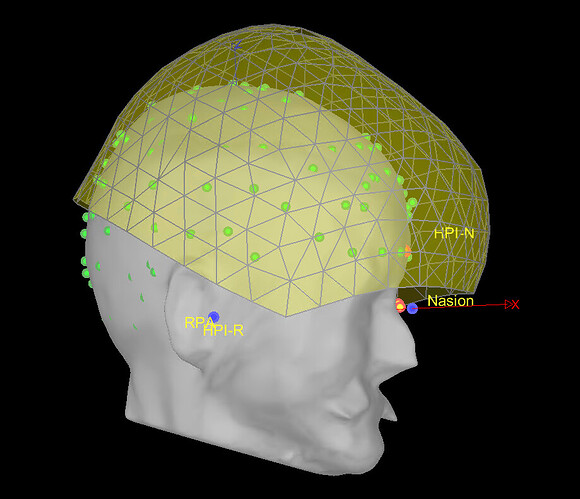Hi Experts,
I imported the BIDS dataset and tried MRI Registration > Refine using head points. However, I am getting some triangle, rectangle gaps in the helmet.
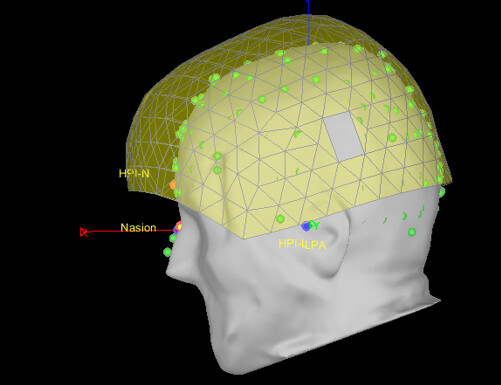
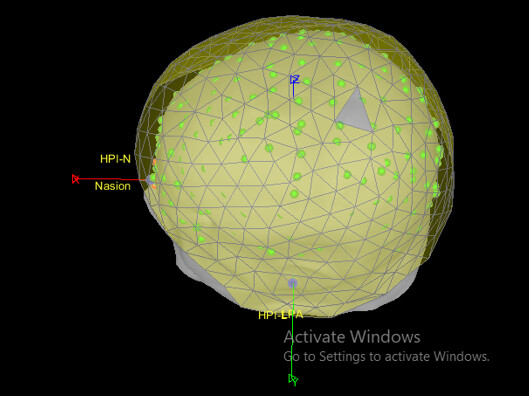 (2 different patients)
(2 different patients)
Also, such slots are not visible in recordings of noises.
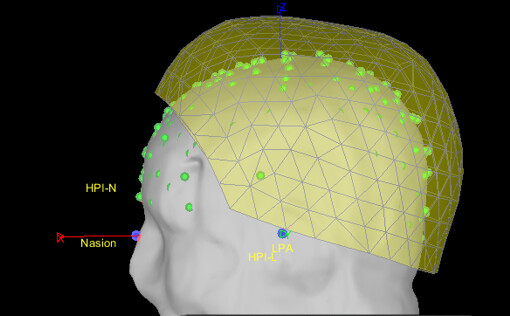
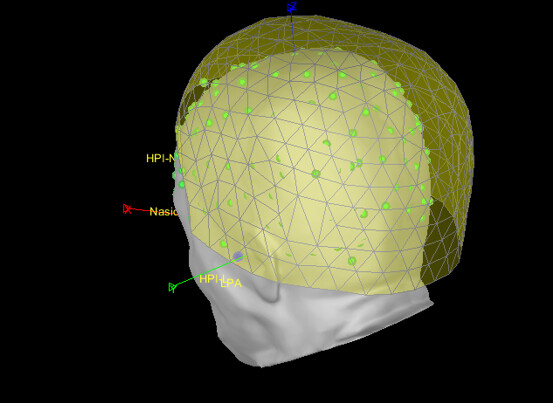 (from the same 2 above patient's noise recordings )
(from the same 2 above patient's noise recordings )
Can you help me understand why are these slots and how do I correct them?
I believe the gaps indicate where "bad sensors" are located for this recording. No need for correction here.
Thank you Sylvain for the prompt response.
Can you help me understand where the MEG SQUID coils are actually in the helmet design - Is it at the vertices of the triangular grids ? Or at the center of each triangle ?
Also, a follow-up on the digitised head points:
My understanding is that these points are marked by a pointer (probe) on the surface of the head to map the head geometry. However, after refinement; many points are within the skull as seen in the above screenshots. I wonder why?
The yellow surface is an approximation of the internal surface of the MEG helmet. The sensors per se are actually further away from the scalp. You can display their actual positions by right-clicking over the channel file.
As for the digitized scalp points, make sure you follow the tutorial instructions to align them as well as possible with the skin surface (not skull). As you wrote, their digitized locations are not always perfect due to real life circumstances, hence the necessity to collect a large number of points to average out possible errors.
Hi Sylvain!
For the following subject, the MEG helmet seems to be tilted in front. I adjusted the co-ordinate system to co-register MEG-MRI, removed points below nasion and refined the adjustment. I am not sure - if such orientation was maintained during the recording. I didn't find any comments in the session description.
Can you guide me if I should proceed with the orientation or edit?
Although the head position seems awkward, it may happen with participants with smaller heads because they have more room in the helmet. In the absence of other data source, I would consider this head position as fine. You can further assess validity with the mapping of early the functional response to sound or visual inputs, or any basic "localizing" data, if available.
It is resting state MEG data - so no localising data available. I am thinking of going ahead with this orientation and see the results when I do source analysis.
Thanks!
That's your best bet indeed!
1 Like
I'd add that you can look at the head position throughout the recording with continuous head localization (CHL) in CTF datasets. This should help you confirm if the head was at this position throughout. See the Brainstorm tutorial on head motion.
Marc,
The link seems to be broken.
Right, the tutorial website seems down at the moment. Please try again later.

 (2 different patients)
(2 different patients)
 (from the same 2 above patient's noise recordings )
(from the same 2 above patient's noise recordings )